-
 Bitcoin
Bitcoin $82,566.9998
-0.36% -
 Ethereum
Ethereum $1,770.8770
-1.07% -
 Tether USDt
Tether USDt $0.9994
-0.02% -
 XRP
XRP $2.0614
-3.29% -
 BNB
BNB $583.8121
-1.62% -
 USDC
USDC $0.9999
-0.01% -
 Solana
Solana $115.1587
-2.80% -
 Dogecoin
Dogecoin $0.1617
-3.41% -
 TRON
TRON $0.2395
1.09% -
 Cardano
Cardano $0.6272
-3.78% -
 UNUS SED LEO
UNUS SED LEO $9.0140
0.76% -
 Chainlink
Chainlink $12.3862
-2.62% -
 Toncoin
Toncoin $3.2898
0.43% -
 Stellar
Stellar $0.2465
-3.02% -
 Avalanche
Avalanche $17.0255
-5.18% -
 Shiba Inu
Shiba Inu $0.0...01188
-2.29% -
 Sui
Sui $2.1178
-4.63% -
 Hedera
Hedera $0.1544
-3.78% -
 Polkadot
Polkadot $3.8825
-1.35% -
 MANTRA
MANTRA $6.2174
-0.29% -
 Litecoin
Litecoin $79.3300
-3.73% -
 Bitcoin Cash
Bitcoin Cash $290.8407
-2.81% -
 Dai
Dai $0.9999
-0.03% -
 Bitget Token
Bitget Token $4.4075
-1.72% -
 Ethena USDe
Ethena USDe $0.9990
-0.02% -
 Pi
Pi $0.6262
-4.81% -
 Monero
Monero $211.5482
-2.02% -
 Hyperliquid
Hyperliquid $11.2155
-2.99% -
 Uniswap
Uniswap $5.6340
-3.51% -
 OKB
OKB $53.5839
5.33%
How does the NFT trading platform guarantee the authenticity and uniqueness of artworks?
NFTs leverage blockchain, cryptographic hashing, and smart contracts to guarantee authenticity and uniqueness, though platform security and user diligence remain crucial to mitigate risks.
Mar 06, 2025 at 03:01 pm
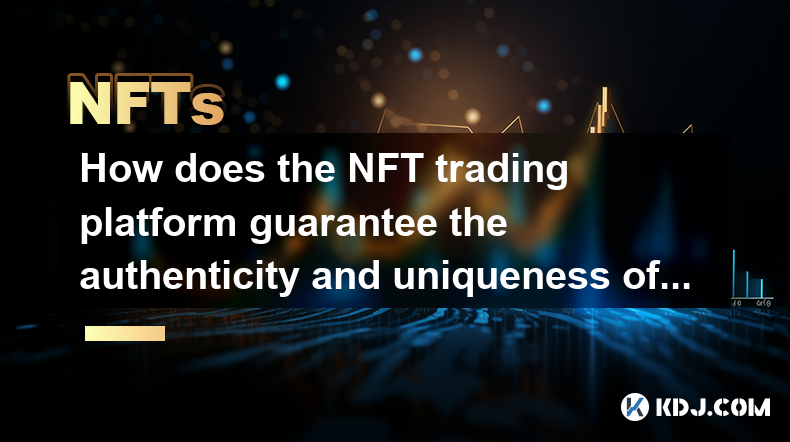
Key Points:
- NFTs utilize blockchain technology to ensure authenticity and uniqueness.
- Verification through cryptographic hashing and smart contracts is crucial.
- Platform-specific measures like provenance tracking and verification processes add extra layers of security.
- Potential risks and vulnerabilities still exist despite these safeguards.
- User due diligence and choosing reputable platforms are vital for safety.
How does the NFT trading platform guarantee the authenticity and uniqueness of artworks? This question delves into the core functionality of NFT marketplaces and the technological safeguards in place to prevent fraud and counterfeiting. The answer lies in a combination of blockchain technology, cryptographic techniques, and platform-specific security measures.
The foundation of NFT authenticity rests on blockchain technology. Each NFT is a unique token on a blockchain, represented by a unique cryptographic hash. This hash acts as a digital fingerprint, inextricably linked to the artwork's data. Any alteration to the artwork, however minor, will change the hash, making the forgery immediately detectable. This immutable record on the blockchain serves as proof of ownership and authenticity.
Smart contracts play a crucial role in guaranteeing uniqueness. These self-executing contracts, written into the blockchain code, automatically verify the NFT's authenticity upon transfer. They ensure only one token representing a specific artwork can exist, preventing duplication and counterfeiting. This automated verification system streamlines the process and reduces the potential for human error.
While blockchain and smart contracts provide a strong foundation, NFT platforms often implement additional security measures. Many platforms meticulously track the provenance of an NFT, recording its history of ownership and transactions. This transparent record adds another layer of verification, allowing buyers to trace the NFT's journey from creation to the current sale. These platforms also often employ rigorous verification processes before listing an NFT, requiring creators to provide proof of ownership and authenticity.
However, it's crucial to understand that even with these measures, vulnerabilities can exist. Phishing scams, platform exploits, and even outright malicious actors can pose threats. The security of an NFT is not solely dependent on the platform but also on the user's awareness and vigilance. Users should be wary of suspicious links, unfamiliar platforms, and overly enticing offers.
Choosing a reputable and well-established NFT marketplace is vital. Platforms with strong reputations often have robust security protocols, dedicated customer support, and active community moderation to combat fraudulent activities. Thoroughly researching a platform before engaging in transactions is crucial to minimizing risk.
Despite technological advancements, human error remains a potential weakness. Mistakes in handling private keys, which grant access to NFTs, can lead to loss of ownership or theft. Users must practice responsible key management, utilizing secure storage methods and avoiding sharing their keys with others. Understanding the implications of your actions and taking precautions is essential for protecting your digital assets.
Furthermore, the legal landscape surrounding NFTs is still evolving. The definition of ownership and the legal recourse available in case of disputes are not yet fully established in all jurisdictions. This legal ambiguity adds another layer of complexity and risk to NFT transactions.
The authenticity of the underlying artwork itself also plays a role. While the NFT guarantees the authenticity of the token representing the artwork, it doesn't necessarily guarantee the authenticity of the artwork itself. If the original artwork is a forgery, the NFT only represents a digital token of that forgery.
Many platforms employ advanced verification techniques, such as integrating with digital watermarking or using blockchain-based certification systems to ensure the artwork itself is genuine. These technologies, when implemented effectively, add an extra layer of protection against counterfeiting and ensure the digital asset reflects a genuine physical or digital original.
The security of an NFT ecosystem relies heavily on the collaboration between developers, platforms, and users. Continuous improvement of security protocols, enhanced user education, and stricter regulatory frameworks are all necessary to create a more secure and trustworthy environment for NFT trading.
The unique characteristics of NFTs are intrinsically linked to their cryptographic nature. The process involves generating a unique cryptographic hash for each NFT, ensuring its uniqueness. Any alteration to the NFT’s data, even a slight one, would alter the hash, making the alteration immediately apparent.
This uniqueness is further reinforced by the use of smart contracts. These self-executing contracts embedded in the blockchain ensure that only one instance of a specific NFT can exist. This prevents duplication and counterfeiting, a key aspect in preserving the value and exclusivity of NFTs.
The immutability of blockchain technology is fundamental to guaranteeing the authenticity of NFTs. Once an NFT is recorded on the blockchain, its data cannot be altered or deleted. This creates a permanent, auditable record of the NFT’s ownership history and authenticity, providing buyers with confidence and transparency.
The integration of provenance tracking adds another layer of security. Many platforms meticulously record the entire history of an NFT, from its creation to its current owner. This detailed record allows buyers to verify the NFT's journey, reducing the risk of acquiring a stolen or counterfeit NFT.
However, users should remain vigilant. While the technology offers strong guarantees, human error or malicious activities can still compromise security. Using reputable platforms, understanding the risks involved, and practicing safe key management are crucial for safeguarding your NFTs.
Frequently Asked Questions:
Q: Can NFTs be copied?
A: The digital file associated with an NFT can be copied, but the NFT itself—the unique token on the blockchain—cannot be duplicated. The copy lacks the verifiable ownership and authenticity provided by the blockchain record.
Q: How do I verify the authenticity of an NFT before purchasing?
A: Check the NFT’s metadata, which includes its unique ID and blockchain address. Verify the platform’s reputation and look for provenance records showing the NFT's ownership history. Examine the platform’s security measures and user reviews.
Q: What happens if the NFT platform is compromised?
A: While a platform compromise can affect access to NFTs, the NFTs themselves remain on the blockchain. Recovery might be more complex, and user funds might be at risk, emphasizing the importance of choosing secure and reputable platforms.
Q: What role does the original artwork play in NFT authenticity?
A: The NFT's authenticity relates to the token on the blockchain, not necessarily the original artwork's authenticity. While some platforms verify the artwork, the NFT itself only guarantees the uniqueness and ownership of the token representing the artwork.
Disclaimer:info@kdj.com
The information provided is not trading advice. kdj.com does not assume any responsibility for any investments made based on the information provided in this article. Cryptocurrencies are highly volatile and it is highly recommended that you invest with caution after thorough research!
If you believe that the content used on this website infringes your copyright, please contact us immediately (info@kdj.com) and we will delete it promptly.
- Ethereum and Bitcoin Went Through Very Different Trajectories
- 2025-04-06 21:10:13
- As Bitcoin Strengthens Its Dominant Position in the Markets, the Kaiko Research Report Disrupts Expectations for 2025
- 2025-04-06 21:10:13
- Bitcoin Dominates the Cryptocurrency Market, Leaving Altcoins in the Dust
- 2025-04-06 21:05:12
- Bitcoin (BTC) price consolidates within a triangle pattern, setting the stage for a potential 15% move
- 2025-04-06 21:05:12
- Hut 8 Spins Off Bitcoin Mining Business to Launch American Bitcoin
- 2025-04-06 21:00:12
- 'Hawk Tuah girl' Haliey Welch's Twitter account suspended despite being cleared of crypto scandal involvement
- 2025-04-06 21:00:12
Related knowledge
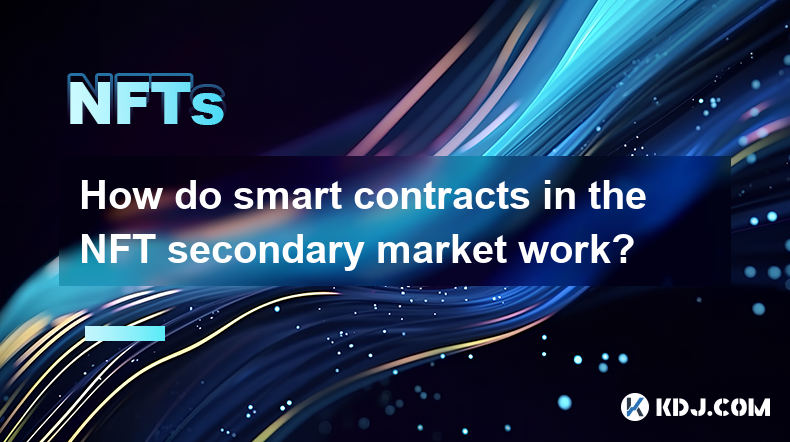
How do smart contracts in the NFT secondary market work?
Apr 03,2025 at 07:14am
Smart contracts play a pivotal role in the NFT secondary market, facilitating seamless transactions and enforcing predefined rules. These self-executing contracts with the terms of the agreement directly written into code are stored on the blockchain. In the context of NFTs, smart contracts automate the buying, selling, and transferring of digital asset...
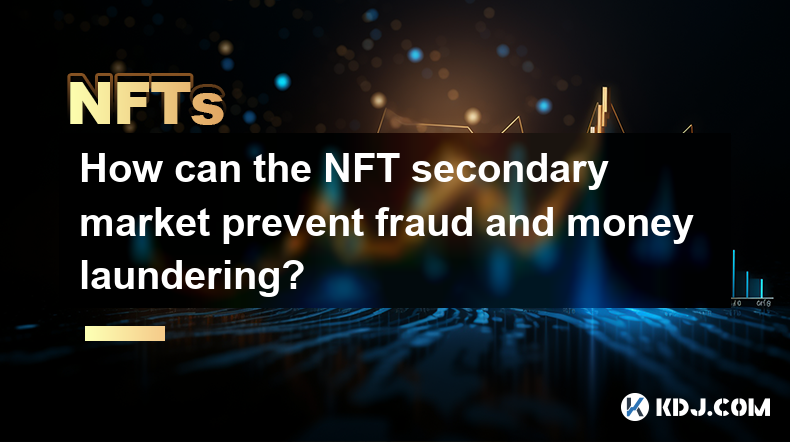
How can the NFT secondary market prevent fraud and money laundering?
Apr 03,2025 at 08:35am
The NFT secondary market has become a thriving hub for digital art and collectibles, but it also faces challenges in preventing fraud and money laundering. To tackle these issues, the market can implement various strategies and technologies to ensure a safer and more transparent trading environment. This article will explore how the NFT secondary market...

How are transaction fees in the NFT secondary market calculated?
Apr 04,2025 at 05:28am
The calculation of transaction fees in the NFT secondary market is a crucial aspect that both buyers and sellers need to understand. These fees can significantly impact the overall cost of transactions and the profits that sellers can make. In this article, we will delve into the various components that make up these fees, how they are calculated, and w...
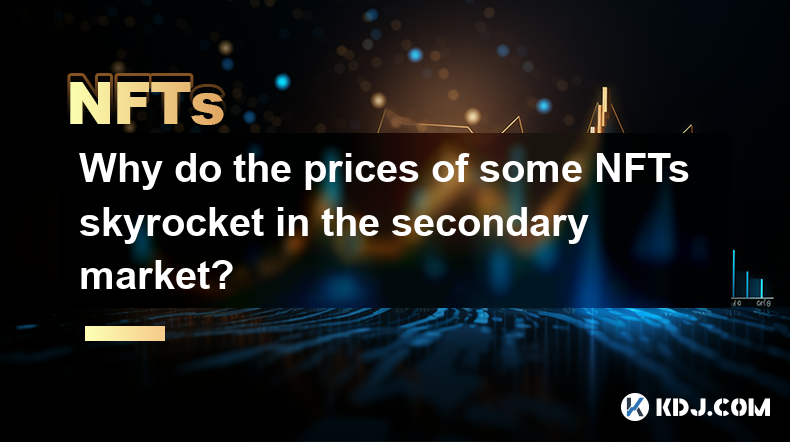
Why do the prices of some NFTs skyrocket in the secondary market?
Apr 06,2025 at 07:08am
The phenomenon of NFT prices skyrocketing in the secondary market is a fascinating aspect of the cryptocurrency and digital art world. Non-Fungible Tokens (NFTs) have taken the digital world by storm, and their value can surge dramatically after initial sales. Several factors contribute to this price surge, including rarity, demand, speculation, and the...
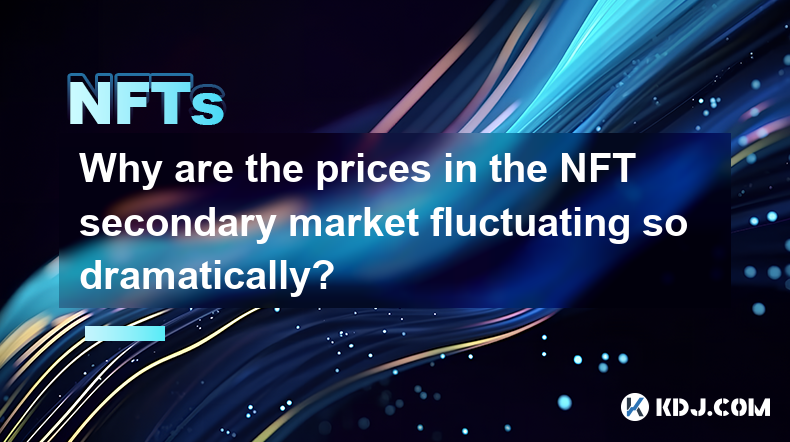
Why are the prices in the NFT secondary market fluctuating so dramatically?
Apr 03,2025 at 10:35pm
The NFT secondary market has been experiencing dramatic price fluctuations, leaving many in the cryptocurrency community puzzled and curious. To understand this phenomenon, it's essential to delve into the factors driving these price movements. From the impact of market sentiment and celebrity endorsements to the role of speculation and the unique natur...
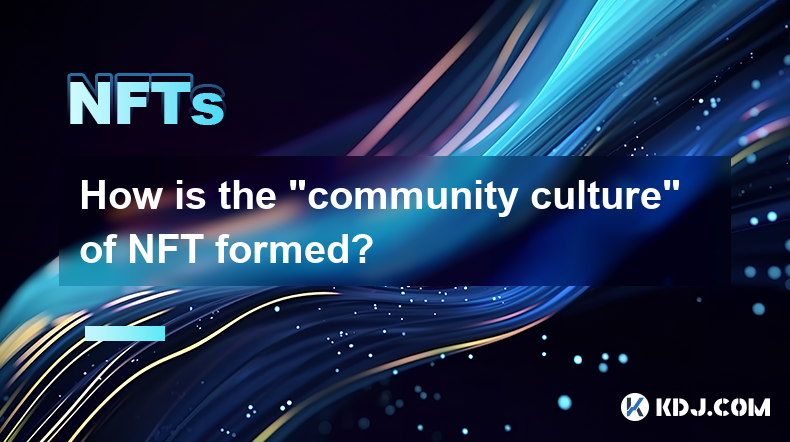
How is the “community culture” of NFT formed?
Apr 03,2025 at 11:07am
The formation of the 'community culture' within the NFT (Non-Fungible Token) space is a fascinating and multi-faceted process. It involves various elements such as shared interests, active engagement, and the creation of a sense of belonging among members. NFT communities often revolve around specific projects or artists, fostering a unique environment ...

How do smart contracts in the NFT secondary market work?
Apr 03,2025 at 07:14am
Smart contracts play a pivotal role in the NFT secondary market, facilitating seamless transactions and enforcing predefined rules. These self-executing contracts with the terms of the agreement directly written into code are stored on the blockchain. In the context of NFTs, smart contracts automate the buying, selling, and transferring of digital asset...

How can the NFT secondary market prevent fraud and money laundering?
Apr 03,2025 at 08:35am
The NFT secondary market has become a thriving hub for digital art and collectibles, but it also faces challenges in preventing fraud and money laundering. To tackle these issues, the market can implement various strategies and technologies to ensure a safer and more transparent trading environment. This article will explore how the NFT secondary market...

How are transaction fees in the NFT secondary market calculated?
Apr 04,2025 at 05:28am
The calculation of transaction fees in the NFT secondary market is a crucial aspect that both buyers and sellers need to understand. These fees can significantly impact the overall cost of transactions and the profits that sellers can make. In this article, we will delve into the various components that make up these fees, how they are calculated, and w...

Why do the prices of some NFTs skyrocket in the secondary market?
Apr 06,2025 at 07:08am
The phenomenon of NFT prices skyrocketing in the secondary market is a fascinating aspect of the cryptocurrency and digital art world. Non-Fungible Tokens (NFTs) have taken the digital world by storm, and their value can surge dramatically after initial sales. Several factors contribute to this price surge, including rarity, demand, speculation, and the...

Why are the prices in the NFT secondary market fluctuating so dramatically?
Apr 03,2025 at 10:35pm
The NFT secondary market has been experiencing dramatic price fluctuations, leaving many in the cryptocurrency community puzzled and curious. To understand this phenomenon, it's essential to delve into the factors driving these price movements. From the impact of market sentiment and celebrity endorsements to the role of speculation and the unique natur...

How is the “community culture” of NFT formed?
Apr 03,2025 at 11:07am
The formation of the 'community culture' within the NFT (Non-Fungible Token) space is a fascinating and multi-faceted process. It involves various elements such as shared interests, active engagement, and the creation of a sense of belonging among members. NFT communities often revolve around specific projects or artists, fostering a unique environment ...
See all articles





















































































